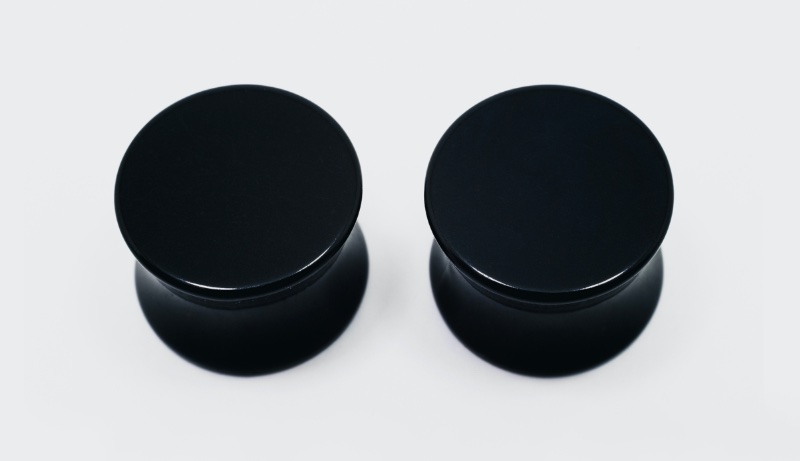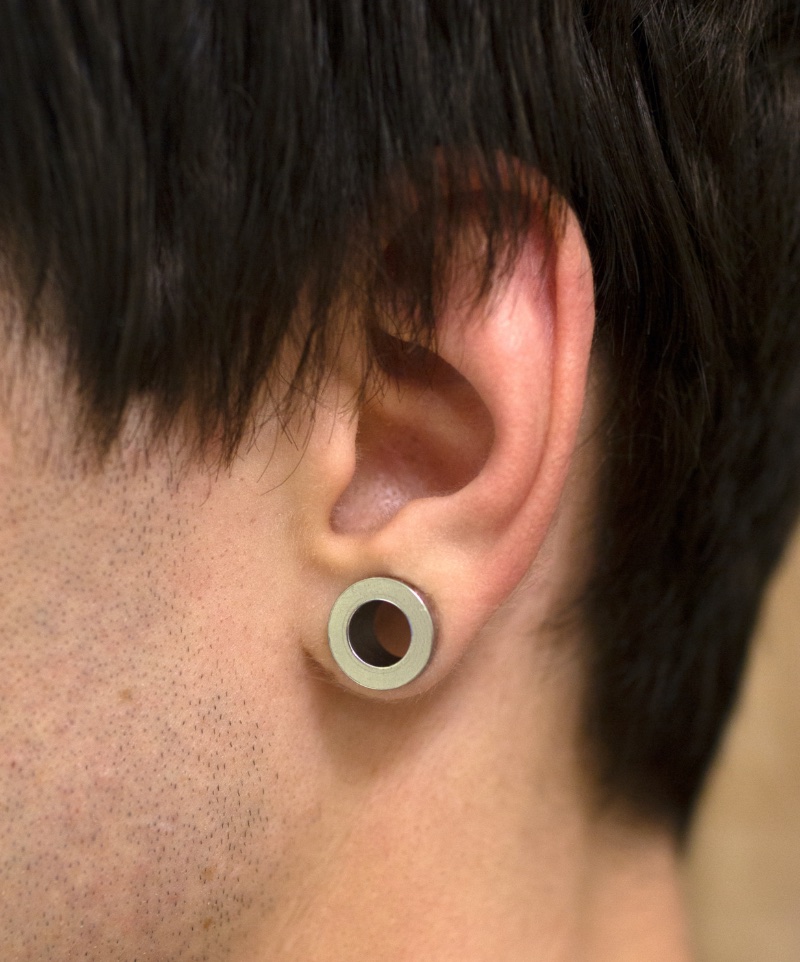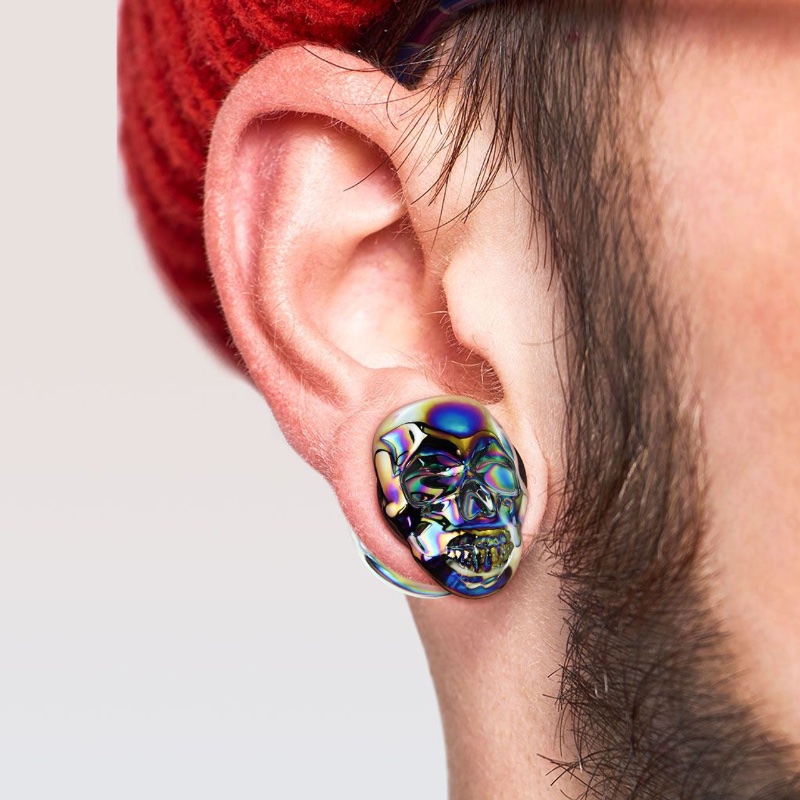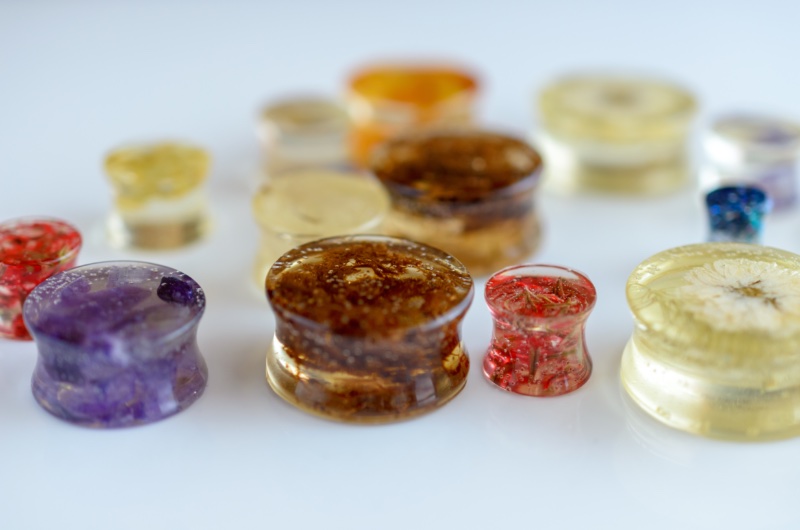
With various materials available, ear gauges and plugs have become increasingly popular for self-expression and personal style. This guide will explore some of the most common materials used for ear gauges and plugs, including acrylic, stainless steel, glass, stone, and wood, highlighting their advantages and disadvantages.
Ear Gauges & Plugs: Types of Material
By understanding the materials available for ear gauges and plugs, you can make an informed decision and choose the best option for your needs and preferences.
Acrylic

Acrylic is a common material used for ear gauges and plugs. It is affordable and available in various colors and designs, making it a popular choice for those experimenting with different styles. Additionally, acrylic is lightweight, making it comfortable to wear for extended periods.
One benefit of acrylic ear gauges and plugs is that they are less likely to cause an allergic reaction than other materials. It is because acrylic is non-toxic and non-allergenic, making it a safe option for sensitive skin.
However, it is essential to note that acrylic can be easily scratched or damaged and may not be as durable as other materials. It is also not recommended to wear acrylic plugs during activities that involve water, such as swimming or showering, as they may cause the fabric to break down over time.
Stainless Steel

Stainless steel is a popular material for body jewelry, including ear gauges and plugs. It is durable, corrosion-resistant, and easy to clean, making it a practical choice for those who want a low-maintenance option.
One benefit of stainless-steel ear gauges and plugs is that they are hypoallergenic, making them an excellent option for sensitive skin. Additionally, stainless steel plugs are available in various styles and designs, including those with unique patterns and textures.
It is worth noting that some people may still be allergic to stainless steel, especially if they have a nickel allergy. Also, one should avoid wearing stainless steel plugs during activities that involve water, as prolonged exposure to moisture can cause the material to corrode over time.
Glass

Glass ear gauges and plugs are becoming increasingly popular due to their unique aesthetics and versatility. Glass is non-porous and easy to clean and sterilize, making it a hygienic option for body jewelry.
One benefit of glass ear gauges and plugs is that they are available in various colors and designs, including those with intricate patterns and textures. Furthermore, glass plugs can be easily customized, allowing you to create a one-of-a-kind piece that reflects your style.
Another benefit of glass ear gauges and plugs is that they are hypoallergenic and less likely to cause irritation or allergic reactions. Glass is also non-reactive, making it a safe option for sensitive skin.
Glass ear gauges and plugs may be more fragile than other materials and break if dropped or mishandled. However, they may not be suitable for those who engage in physical contact or impact activities, as they may shatter or break.
Stone

Stone ear gauges and plugs are popular for those looking for a natural, organic look. Stone plugs are available in various colors and textures, ranging from smooth and polished to rough and raw.
One benefit of stone ear gauges and plugs is that they are durable and long-lasting. They are also hypoallergenic, making them a safe option for sensitive skin.
Another benefit of stone ear gauges and plugs is that they can be easily customized, allowing you to create a unique piece that reflects your style. Stone plugs can also be paired with natural materials like wood or bone to create a layered, textured look.
It is necessary to highlight that stone ear gauges and plugs may be heavier than other materials, which may cause discomfort or stretching of the ear lobes over time. Once again, it is better to avoid wearing stone plugs during water or high-impact activities, as they may crack or break.
Wood

Wood ear gauges and plugs have a natural, earthy look and are popular among those who prefer organic materials. Wood plugs are available in various types, including bamboo, ebony, rosewood, and more.
One benefit of wood ear gauges and plugs is that they are lightweight and comfortable to wear, even for extended periods. Wood plugs are also hypoallergenic, making them a safe option for sensitive skin.
Another benefit of wood ear gauges and plugs is that they are customizable and can be easily carved or engraved with unique designs or patterns. These plugs can also be paired with other natural materials, such as stone or bone, to create a layered and textured look.
Wood ear gauges and plugs may be more prone to cracking or warping than other materials, especially if exposed to moisture or extreme temperatures. One should also not wear wood plugs during water or high-impact activities.
Final Words
Ear gauges and plugs are a popular form of body jewelry that allows individuals to express their style and creativity. When choosing a material for your ear gauges and plugs, it is important to consider factors such as comfort, durability, and hypoallergenic properties.
Acrylic, stainless steel, glass, stone, and wood are all popular materials used for ear gauges and plugs, each with unique benefits and drawbacks. By understanding the properties of each material, you can make an informed decision and choose the fabric that best suits your needs and personal style.





